Green Cellar Slug
Limacus maculatus
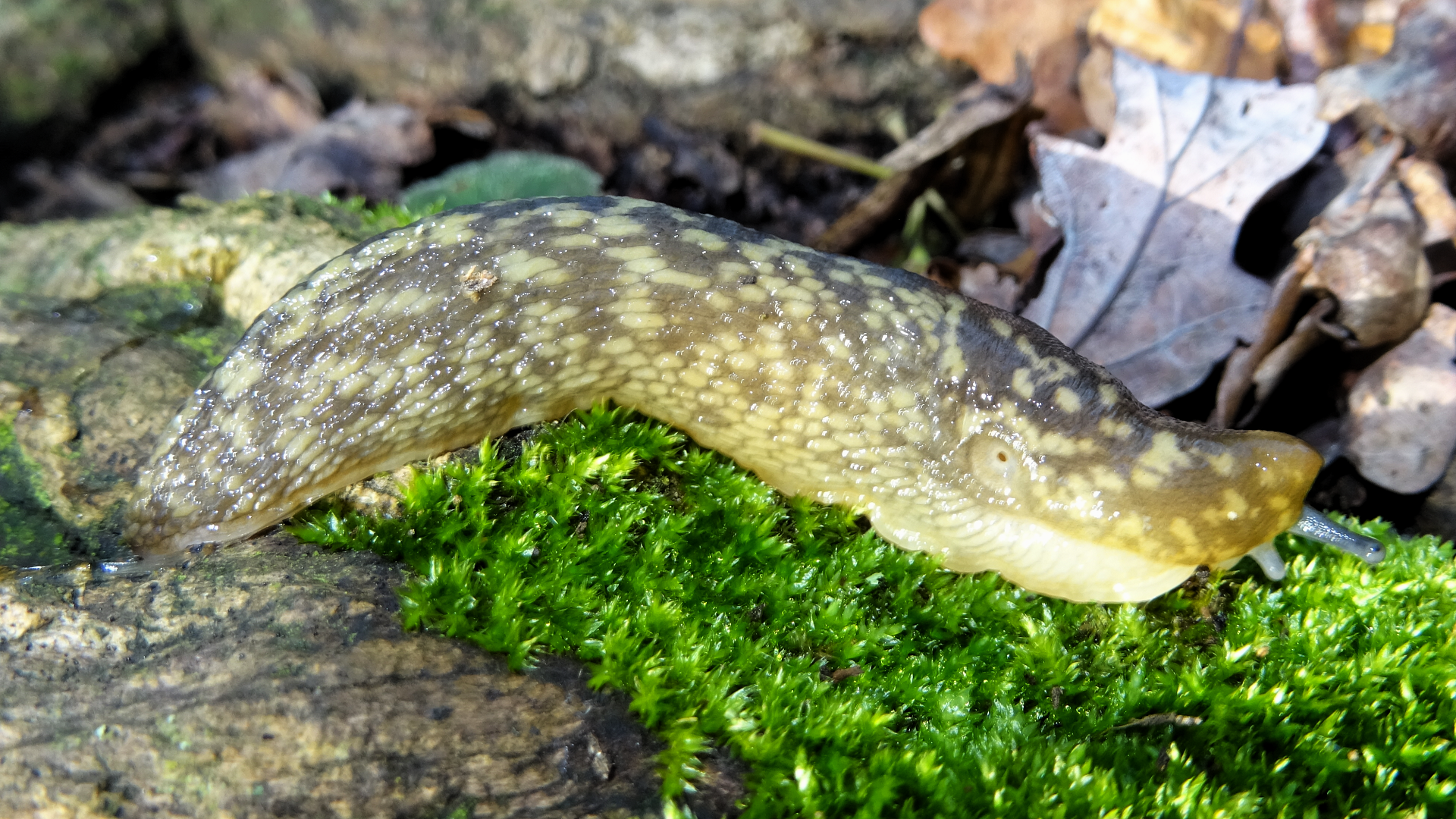
TQ4793 29/01/2020 ©Raymond Small
This species originates from the Caucasus and Black Sea Coast and has now spread across Europe. It feeds on decaying plant material and is not considered a pest because it does not feed on live plants. There is a fingerprint pattern on its mantle, greyish tentacles and a short yellow stripe at tail end. It is similar in appearance to Yellow Cellar Slug
L. flavus, however that species seems to be in decline. Both species produce clear yellow slime. The Yellow Cellar Slug has a long yellow stripe running along the centre of the tail that is absent on the Green Cellar Slug.
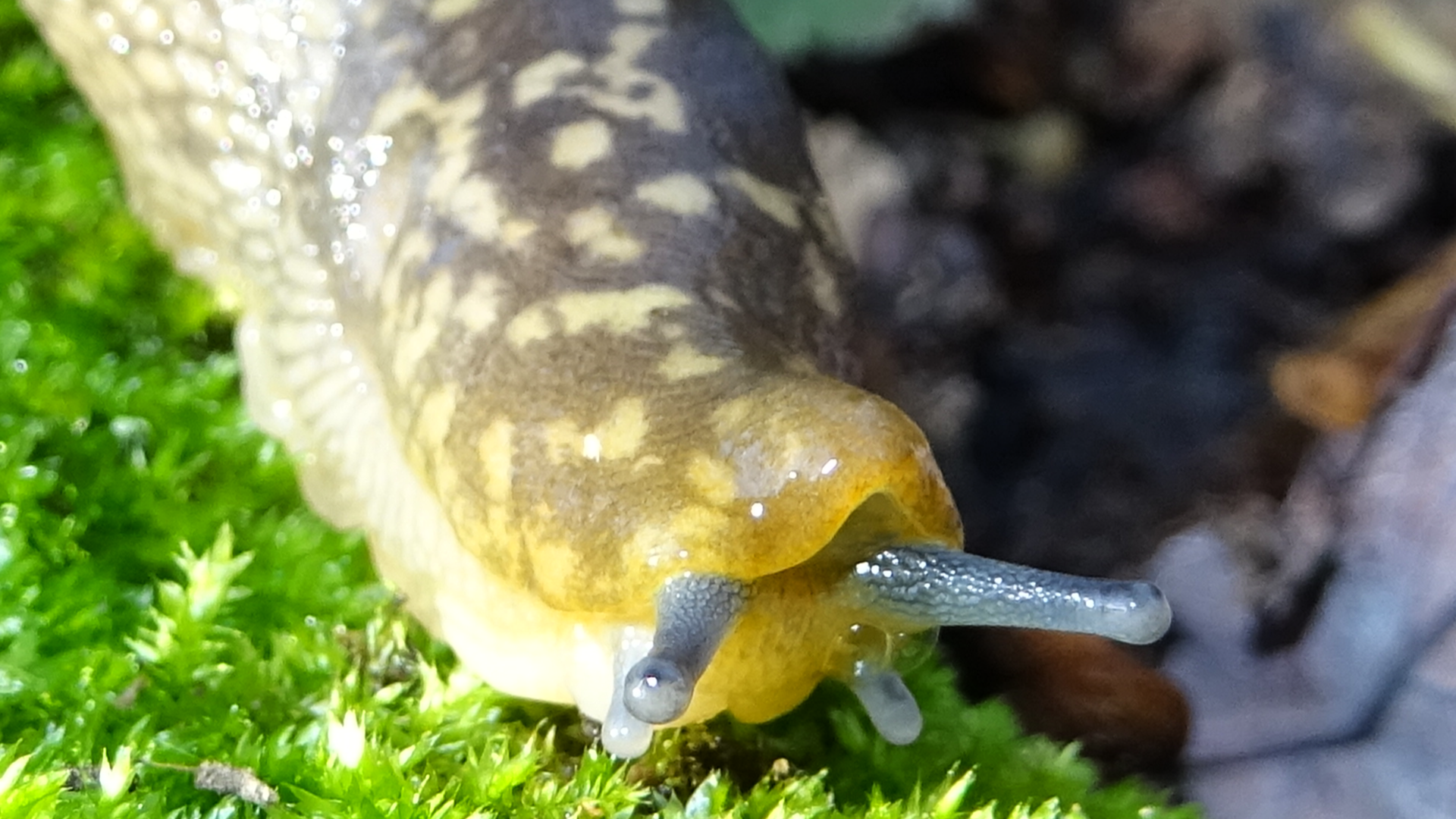
TQ4793 29/01/2020
©Raymond Small

TQ4793 29/01/2020
©Raymond Small
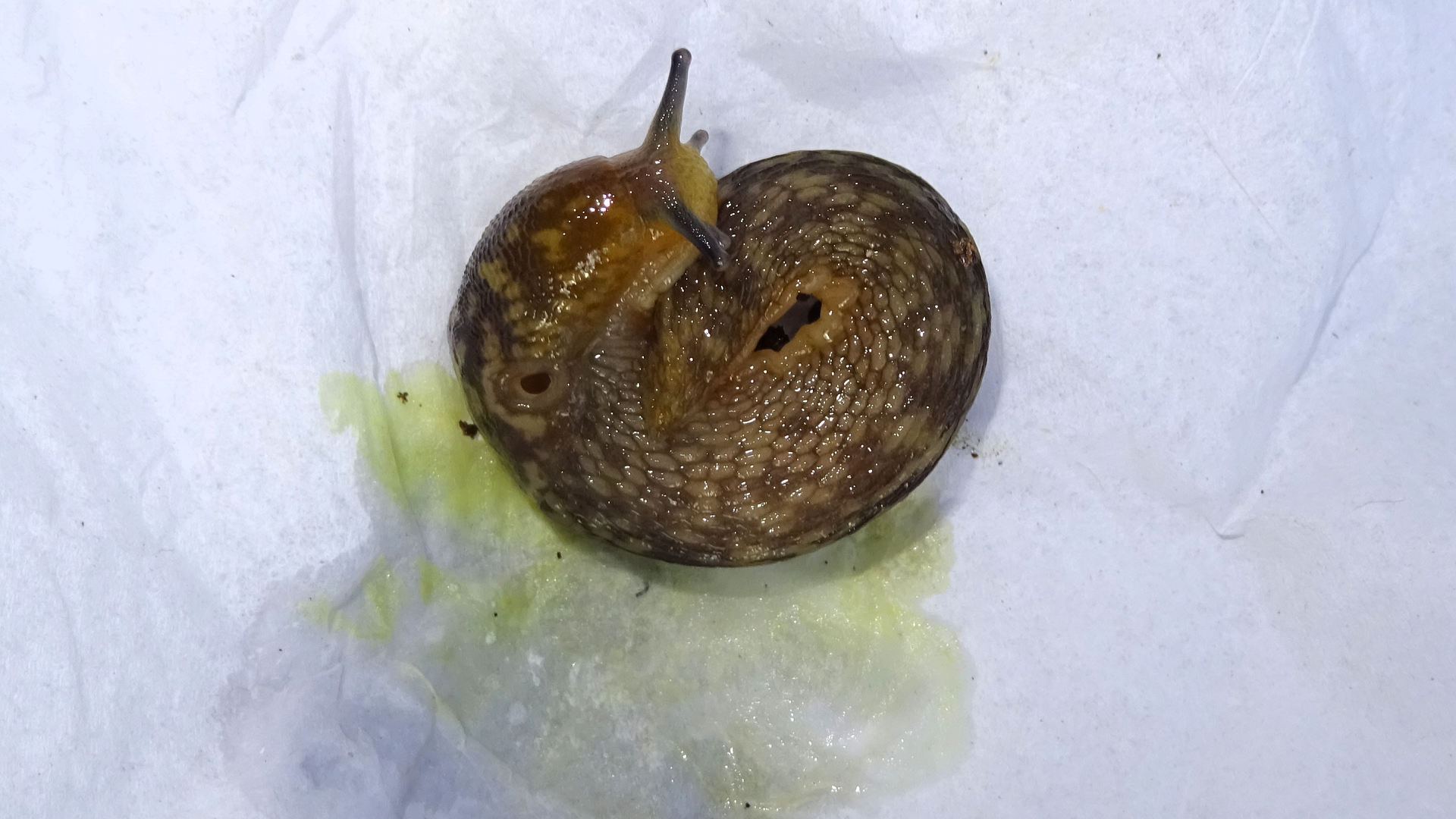
TQ4793 29/01/2020
©Raymond Small
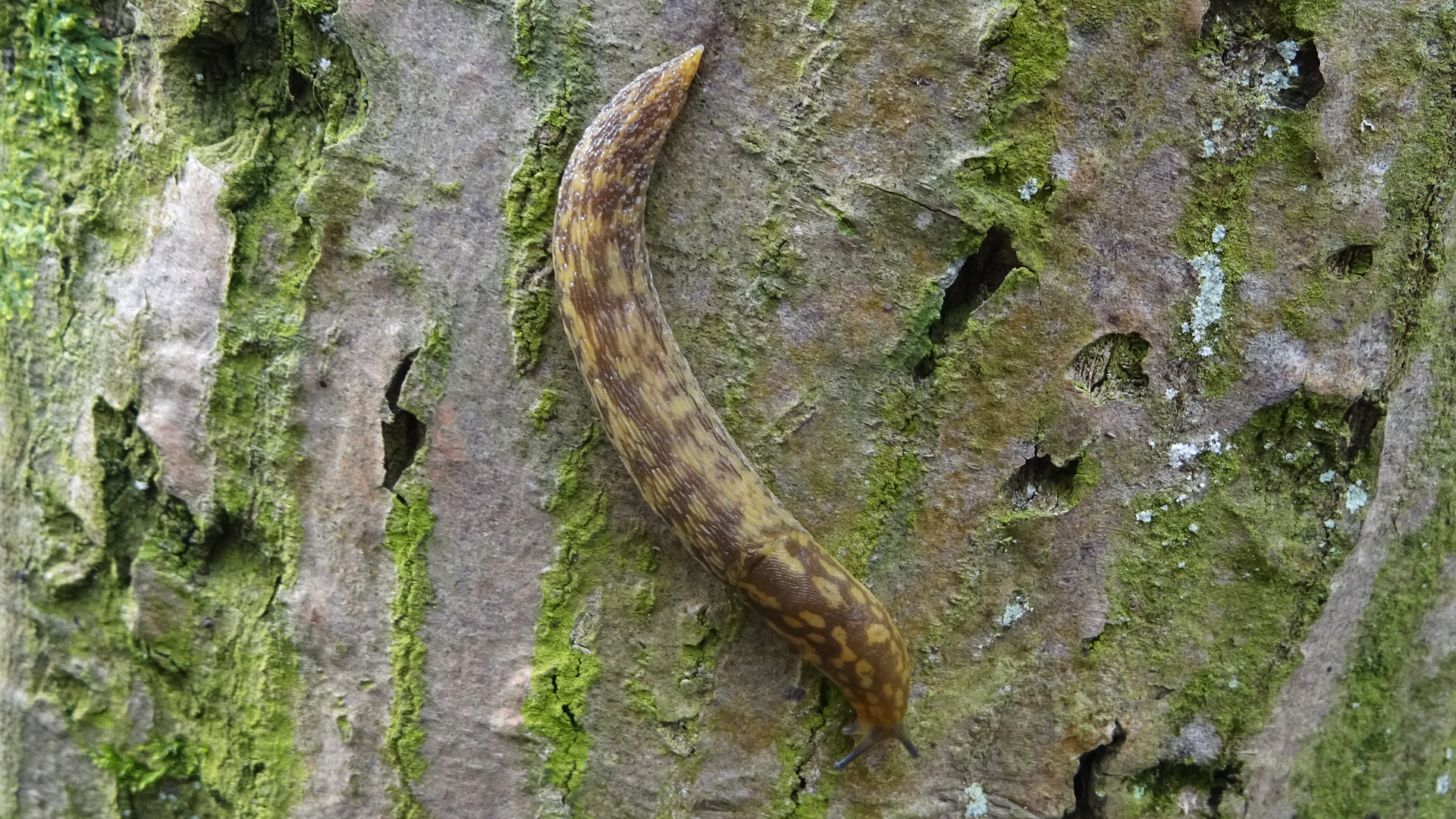
TQ4693 04/03/2024 ©Raymond Small
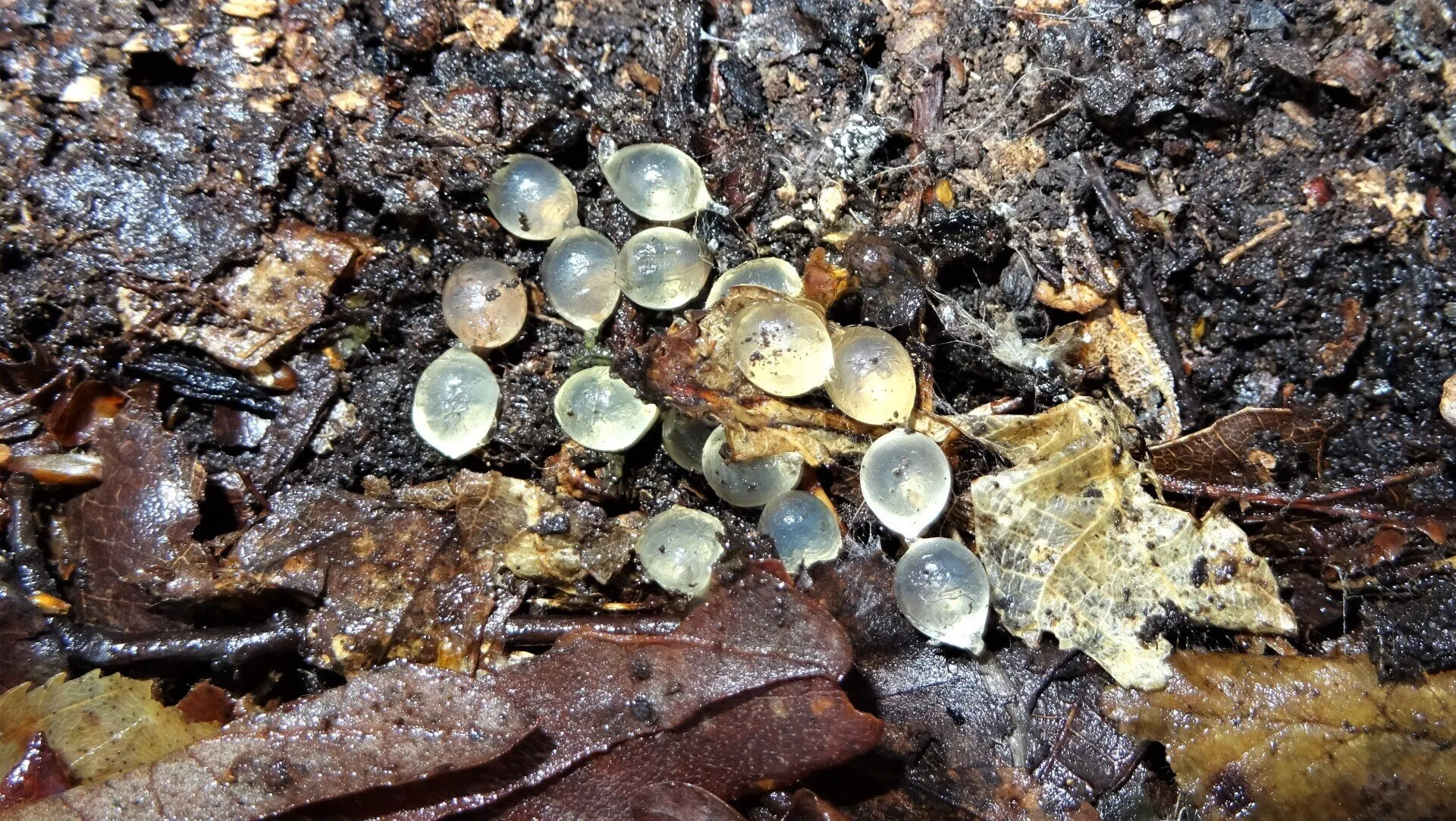
TQ4792 19/12/2018 ©Raymond Small
Limacus species lay lemon-shaped eggs strung together like a necklace. They can often found under logs.
Do you know? A group of slugs can be called a rout, a walk, or a cornucopia.
© hainaultforest.net. All rights reserved.

